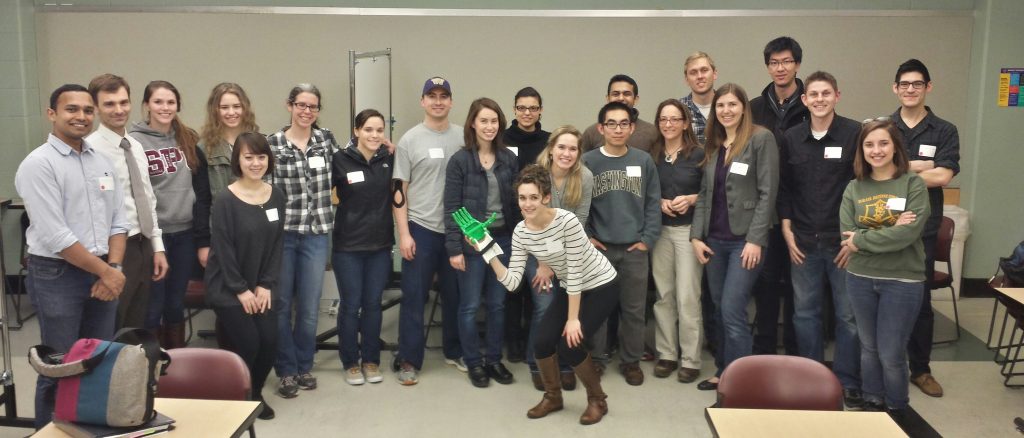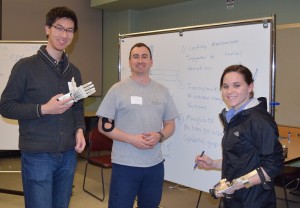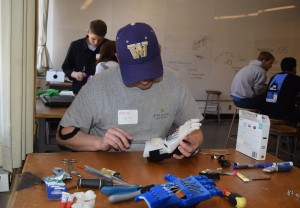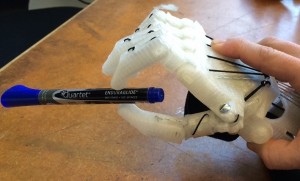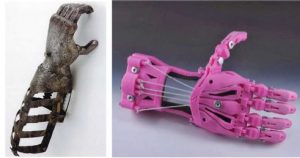New engineering and design tools are revolutionizing our ability to quickly fabricate custom-fit devices. In 2015, we collaborated with UW’s Division of Prosthetics & Orthotics, UW-Bothell, and Seattle Pacific University, to launch a community dedicated to using these tools to improve hand function for individuals with disabilities. This two-day event challenged engineering and P&O students to stretch the possibilities of 3D-printing for prosthetic hand design. We use affordable 3D-printing and scanning technology to create and test open-source designs.
While our lab now focuses on innovations for 3D-printed orthoses, you can check out how the 3D-printed prosthetic community has grown through Enabling the Future!
Seattle Handathon – February 2015
Seattle’s annual Handathon was hosted by the Ability and Innovation lab in February 2015. We were joined by Engineers, Clinicians, Prosthetists and Orthotists, and Computer Scientists: Students and faculty alike for a “hands-on” challenge. The task “at hand” was to imagine and implement creative improvements to the current design, control, and reliability of an opensource prosthetic hand from the e-NABLE community. After the seminar participants had 24 continuous hours to design, build, and showcase their ideas to the group. The Handathon event was featured in UW Today, check it out here.
Adam Arabian, Mark Gantar, Kat Steele, and Susan Spaulding gave introductory seminars before the participants began innovating. The seminars included motivation for the need behind the devices, the approach of Prosthetists and Orthotists, the ins and outs of 3D printing, and designing with the user in mind.
 |
 |
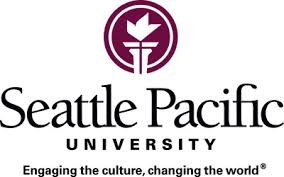 |
Recent News

